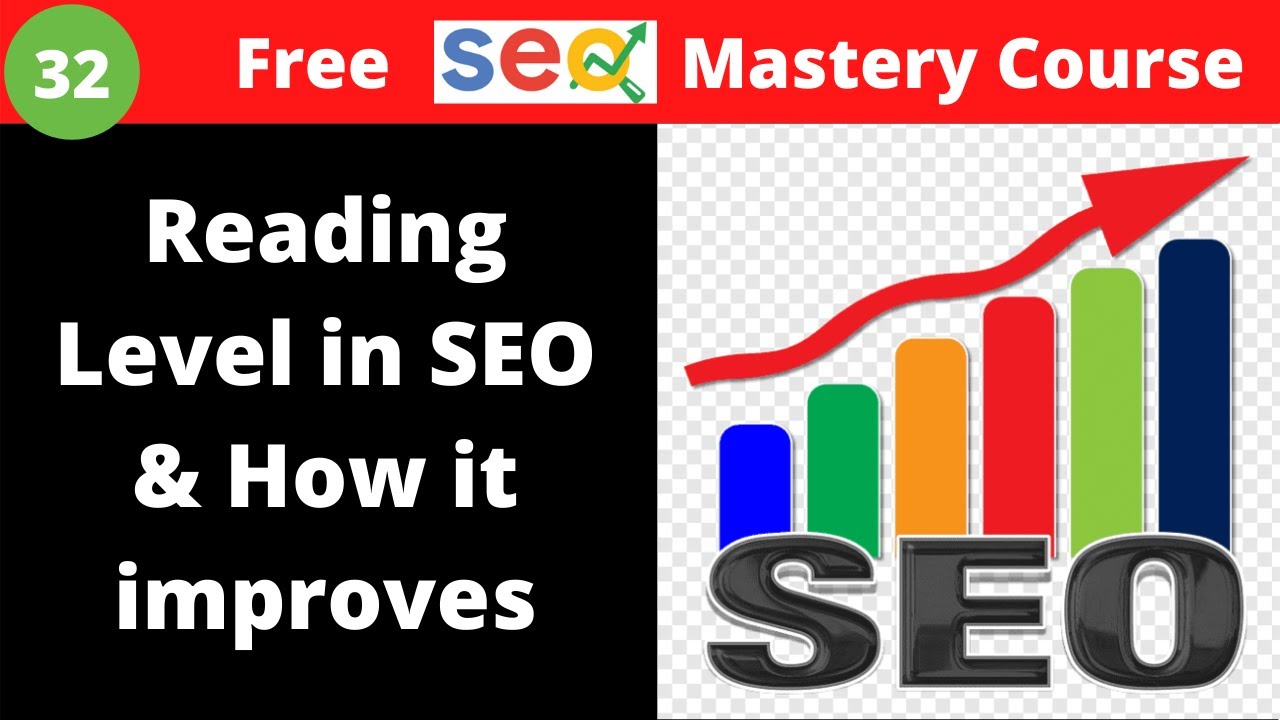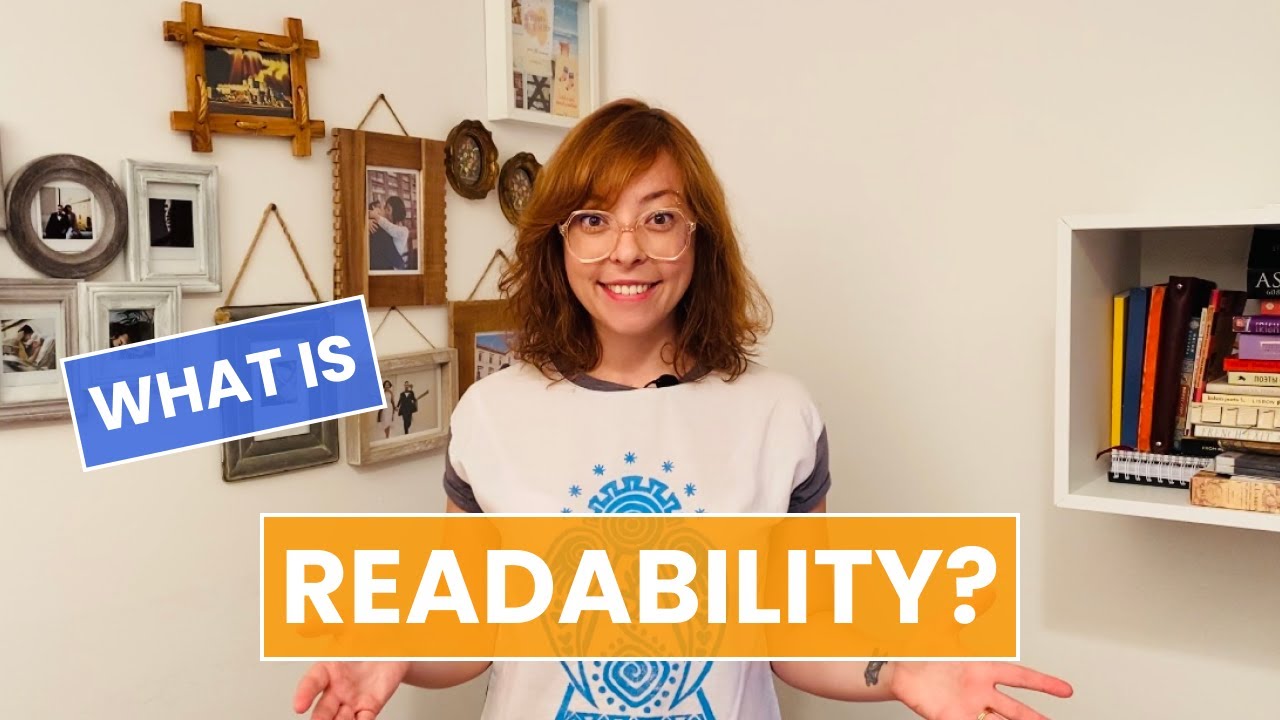In the dynamic world of SEO, website owners and contentcreators are always on the lookout for factors that can boost their search enginerankings. One question that often arises is whether the reading level of content plays a role in Google's ranking algorithm. In this article, we explore reading level: is it a Google ranking factor, shedding light on its significance in the ever-evolving landscape of SEO. The readability of content directly impacts user experience, engagement, and accessibility.
What Is Reading Level In SEO?

What is Reading Level in SEO & How it improves your SEO - Explanation - SEO Factors
Reading level in SEOrefers to the complexity of written content and how easily it can be understood by its intended audience. It is a measure of the readability of a piece of text and is usually determined by the education or comprehension level required to understand it.
In the context of SEO, the reading level is an important consideration because search engines like Google aim to deliver high-quality and user-friendly content to their users. Content that is well-written, engaging, and easy to comprehend tends to perform better with audiences, leading to improved user experience and potentially influencing search engine rankings.
To assess the reading level, various readability tests are used, such as Flesch-Kincaid, Gunning Fog, Coleman-Liau, and others. These tests analyze factors like sentence length, word difficulty, and syllable count to assign a reading grade level to the content.
For SEO purposes, it is essential for content creators to understand their target audience and tailor their writing to match their comprehension capabilities. Striking the right balance between readability and informative content ensures that the content not only ranks well in search engine results but also resonates with readers, encouraging engagement, reducing bounce rates, and possibly leading to natural backlinksand social shares.
Is Reading Level A Google Ranking Factor?
Google has not explicitly confirmed reading level as a direct ranking factor in its search algorithm. While readability and user experience are important considerations, Google's algorithm primarily focuses on content quality, relevance, authority, and user engagement metrics to determine search rankings.
In a 2018 Google Webmaster Hangout, John Mueller, Google's Senior Webmaster Trends Analyst, affirmed that despite contrary claims, the reading level of your content does not play a role in determining your search ranking.
“„From an SEO point of view, it’s probably not something that you need to focus on, in the sense that, as far as I know, we don’t have kind of these basic algorithms that just count words and try to figure out what the reading level is based on these existing algorithms. But it is something that you should figure out for your audience.- John Mueller
However, it is important to note that reading level indirectly impacts SEO performance. Content that is well-written, easy to understand, and tailored to the target audience tends to perform better with users. It can lead to increased engagement, reduced bounce rates, and possibly more natural backlinks and social shares. These positive user signals can indirectly influence search rankings.
In conclusion, while reading level is not a standalone Google ranking factor, it is still a crucial aspect of content creationfor providing a positive user experience, improving accessibility, and potentially contributing to better SEO performance. As Google's algorithm evolves, its focus on delivering high-quality and user-friendly content is expected to remain a fundamental aspect of search rankings.
Indirect Influence Of Reading Level SEO
The reading level of content indirectly influences SEO through various factors that impact user experience and content engagement. While it may not be a direct ranking factor, its significance lies in how it affects user behavior and signals to search engines. Let's explore the indirect influence of reading level on SEO:
- User Engagement Metrics -Search engines like Google consider user engagement metrics, such as dwell time, bounce rate, and click-through rate, to determine the relevance and quality of content. When content is well-written and easily readable, users are more likely to spend more time on the page, reducing bounce rates. This indicates to search engines that the content is valuable and relevant to the user's query, potentially leading to improved rankings.
- Social Shares and Backlinks -Readable content tends to be shared more frequently on social mediaplatforms and linked to other websites. Content that provides value and is easy to understand becomes a valuable resource for others to reference and share. The accumulation of natural backlinks and social shares signals to search engines that the content is authoritative and trustworthy, which can positively impact SEO.
- Improved Mobile Experience - With the increasing use of mobile devices for internet browsing, ensuring content readabilityon smaller screens is crucial. Content that is optimized for mobile and easy to read provides a positive user experience, leading to increased mobile user engagement. Google considers mobile-friendliness as a ranking factor, making readability on mobile devices indirectly relevant to SEO performance.
- Dwell Time and Click-Through Rate (CTR) -Well-written content that matches user intentand provides the desired information encourages users to stay on the page longer (increasing dwell time) and click through to other relevant pages on the website. High dwell time and CTR suggest to search engines that users find the content valuable and engaging, potentially leading to better rankings.
- Brand Reputationand Authority -High-quality, readable content contributes to a positive brand reputation and authority in a particular niche. When users consistently find valuable, user-friendly content on a website, they are more likely to trust the brand, leading to higher brand authority. Brands with a strong reputation are more likely to attract natural backlinks, social shares, and mentions, all of which indirectly influence SEO.
- User Satisfaction and Return Visits - Readable content that meets user expectations and provides a positive experience encourages return visits and fosters user loyalty. Returning users indicate to search engines that the website consistently delivers valuable content, which can contribute to improved SEO performance over time.
What Reading Level Should My Content Be?

What Is READABILITY & How to Make People Stay on Your Page LONGER
The appropriate reading level for your content depends on several factors, including your target audience, the complexity of your topic, and your content's purpose. There is no one-size-fits-all answer to this question, but here are some general guidelines to help you determine the reading level of your content:
- Know Your Target Audience -Understand the demographics and characteristics of your intended readers. Consider their age group, education level, and familiarity with the topic. For example, if your content is aimed at a specialized audience with in-depth knowledge, a higher reading level may be suitable. On the other hand, if you're targeting a broad audience or providing introductory information, a lower reading level might be more appropriate.
- Use Readability Tests -Consider using readability tests like Flesch-Kincaid, Gunning Fog, or Coleman-Liau to assess the reading level of your content. These tests analyze factors such as sentence length, word difficulty, and syllable count to assign a reading grade level. Aim for a reading level that aligns with your target audience's comprehension capabilities.
- Avoid Jargon and Complexity -Minimize the use of technical jargon and complex language, especially if your target audience consists of non-experts. Presenting information in a clear and straightforward manner enhances readability and makes your content more accessible to a wider audience.
- Provide Context and Definitions -If your topic requires some level of complexity, provide sufficient context and explanations to help readers understand unfamiliar terms and concepts. Breaking down complex ideas into digestible chunks can make your content more reader-friendly.
- Use Visuals and Multimedia -Incorporate relevant images, infographics, and videos to complement your text. Visual aids can help convey information more effectively and engage readers with different learning preferences.
- Test and Iterate -Analyze user engagement metrics, such as time on page, bounce rate, and social shares, to gauge how well your content resonates with your audience. Based on the data, make adjustments to the reading level and style as needed.
How To Write Readable Content?

Readability Tutorial: How to Improve Content Readability for Article, Blog, Website?
Writing readable content is essential for engaging your audience, conveying your message effectively, and ensuring a positive user experience. Here are some tips to help you write readable content:
- Know Your Audience -Understand your target audience's demographics, interests, and knowledge level. Tailor your writing style and language to match your comprehension capabilities and preferences.
- Use Clear and Simple Language -Avoid jargon and technical terms that might confuse readers. Use straightforward language and sentence structures to make your content easily understandable.
- Break Content into Digestible Chunks -Organize your content with headings, subheadings, and bullet points. This formatting makes it easier for readers to scan the content and find relevant information quickly.
- Keep Paragraphs Short -Long blocks of text can be daunting to read. Aim for concise paragraphs, each focusing on a specific point or idea.
- Write in an Active Voice -Use the active voice to make your writing more engaging and direct. Passive voice can make sentences sound more complex and less reader-friendly.
- Use Transitional Phrases -Incorporate transitional words and phrases to guide readers smoothly from one idea to the next. This helps maintain the flow of your content.
- Include Relevant Visuals -Use images, infographics, and videos to complement your text. Visual aids can enhance understanding and engagement.
- Add White Space -Leave enough white space between lines and paragraphs. This makes your content visually appealing and less overwhelming.
- Use Readability Tools -Utilize readability tools like Flesch-Kincaid or Hemingway Editor to assess the readability of your content. These tools provide insights into sentence complexity and readability grade levels.
- Test with Real Users -Share your content with a sample of your target audience and gather feedback. This will help you identify areas where improvements can be made.
- Edit and Revise -After writing, edit your content to eliminate unnecessary words, clarify sentences, and improve overall readability.
- Be Consistent -Maintain a consistent tone and style throughout your content. Consistency helps readers feel more familiar with your writing and enhances readability.
- Focus on Clarity -Ensure that your main message is clear and easy to understand. Avoid ambiguity and provide clear explanations when discussing complex topics.
- Proofread Thoroughly -Eliminate grammar and spelling errors. Errors can disrupt the flow of your content and negatively impact readability.
Balancing Readability And Content Depth
Balancing readability and content depth is a critical aspect of creating high-quality and engaging content that resonates with both readers and search engines. Ensuring that your content is both easy to read and informative requires a thoughtful approach to cater to your target audience's needs while delivering valuable insights. Let's explore some strategies for achieving this balance:
- Know Your Audience - Understand your target audience's demographics, interests, and knowledge level. Tailor your content to match their comprehension capabilities, ensuring it remains accessible and engaging to them.
- Use Clear and Concise Language - Avoid unnecessary jargon and technical terms that could confuse readers. Use straightforward language and sentence structures to make your content easily understandable.
- Break Complex Concepts Down - When covering intricate topics, break them down into digestible chunks. Use subheadings, bullet points, and examples to clarify complex ideas, making it easier for readers to grasp the content.
- Provide Context and Definitions - Ensure that your content includes sufficient context and provides definitions for terms that may be unfamiliar to your audience. This helps bridge knowledge gaps and enhances comprehension.
- Use Visual Aids - Incorporate relevant images, infographics, and videos to supplement your content. Visual aids can enhance understanding and engagement, making complex concepts more accessible.
- Avoid Overly Technical Language - While it's essential to provide valuable insights, avoid overwhelming your audience with excessive technical details. Strike a balance by presenting information in a manner that maintains interest and readability.
- Maintain a Logical Flow - Organize your content in a logical and coherent manner. A well-structured flow helps readers follow the progression of ideas and facilitates better comprehension.
- Emphasize User Experience - User experience should be at the forefront of your content creation strategy. Consider how your content layout, font size, and design elements contribute to overall readability and user engagement.
- Use Readability Tools - Leverage readability tools like Flesch-Kincaid, Gunning Fog, or Hemingway Editor to assess the readability of your content. These tools provide insights into sentence complexity and readability grade levels.
- Test with Your Audience - Gather feedback from your target audience to gauge how well your content strikes the balance between readability and depth. Adjust your approach based on their input and preferences.
- Continual Iteration - Regularly review and update your content to ensure it remains relevant, accurate, and well-balanced. As your audience evolves, so should your content to meet their changing needs.
People Also Ask
How Does Reading Level Impact User Experience And SEO?
Reading level directly affects user experience as it determines how easily your content can be understood by your target audience. Content that matches the comprehension level of your readers tends to improve engagement and reduce bounce rates, positively impacting SEO.
What Is The Role Of Audience Targeting In Maintaining An Appropriate Reading Level?
Understanding your target audience is crucial for determining the appropriate reading level of your content. Tailoring your content to match the comprehension capabilities and education level of your audience ensures that it resonates with them and provides value, enhancing user experience and potentially influencing SEO.
Should I Prioritize Readability Over Content Depth And Complexity?
Striking a balance between readability and content depth is essential. While readability ensures a positive user experience and wider audience reach, valuable and comprehensive content provides more value to your readers, encouraging engagement and possibly attracting natural backlinks and social shares.
Does The Reading Level Of Content Impact Website Accessibility And Inclusivity?
Yes, maintaining an appropriate reading level is essential for accessibility and inclusivity. Creating content that is easily understandable by a diverse audience with varying reading abilities ensures that your website remains inclusive and user-friendly, which can positively impact SEO in the long run.
Conclusion
While Google has not explicitly confirmed reading level as a direct ranking factor, it remains an essential consideration for content creators. Crafting content with an appropriate reading level tailored to the target audience can enhance user experience, engagement, and inclusivity. Google's priority is to deliver high-quality, user-friendly content to its users, making it crucial for SEO practitioners to strike a balance between readability and informative value.
While reading level alone may not determine rankings, it indirectly influences SEO performance by contributing to a positive user experience, encouraging natural backlinks, and improving overall content quality. As SEO strategies continue to evolve, prioritizing readability will undoubtedly remain a best practice for creating valuable content that resonates with both audiences and search engines alike.

